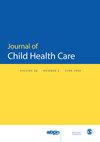求助PDF
{"title":"COVID-19大流行期间远程医疗与患者满意度:儿科泌尿科门诊患者的病例对照研究","authors":"Sarah A Holzman, Carol A Davis-Dao, Antoine E Khoury, Michelle A Fortier, Zeev N Kain","doi":"10.1177/13674935211058272","DOIUrl":null,"url":null,"abstract":"<p><p>Telemedicine has increased during the coronavirus disease 2019 pandemic. Our objective was to determine if patient satisfaction with telemedicine differed from in-person visits in an academic pediatric urology clinic. Following outpatient telemedicine and in-person pediatric urology visits, the validated NRC Health© Patient Survey was used to assess patient experience. Patient satisfaction was assessed on a 10-point scale with scores of 9-10 considered \"satisfied\" and 1-8 considered \"not satisfied.\" Satisfaction scores between telemedicine and in-person groups were compared using McNemar's test, Wilcoxon signed rank test, and conditional logistic regression. Fifty-one patients had urology telemedicine visits during April-August 2020 and completed the NRC Health© Patient Survey. Propensity score matching was used to identify 102 in-person controls between January 2019 and March 2020. Ninety-two percent of telemedicine patients were satisfied compared to 87% of in-person patients (OR 1.7 95% CI [0.53-5.6]). Regression analysis adjusting for matching variables demonstrated that patient satisfaction was higher for telemedicine compared to in-person visits but was not statistically significant (OR 1.5 95% CI [0.43-5.6]). Patient satisfaction with telemedicine was similar to in-person visits in the pediatric urology clinic. Reduced waiting time and convenience associated with telemedicine visits provide an opportunity for telemedicine as a useful modality for pediatric urology.</p>","PeriodicalId":54388,"journal":{"name":"Journal of Child Health Care","volume":"27 3","pages":"351-359"},"PeriodicalIF":1.3000,"publicationDate":"2023-09-01","publicationTypes":"Journal Article","fieldsOfStudy":null,"isOpenAccess":false,"openAccessPdf":"","citationCount":"10","resultStr":"{\"title\":\"Telemedicine and patient satisfaction during the COVID-19 pandemic: A case-control study of outpatient pediatric urology patients.\",\"authors\":\"Sarah A Holzman, Carol A Davis-Dao, Antoine E Khoury, Michelle A Fortier, Zeev N Kain\",\"doi\":\"10.1177/13674935211058272\",\"DOIUrl\":null,\"url\":null,\"abstract\":\"<p><p>Telemedicine has increased during the coronavirus disease 2019 pandemic. Our objective was to determine if patient satisfaction with telemedicine differed from in-person visits in an academic pediatric urology clinic. Following outpatient telemedicine and in-person pediatric urology visits, the validated NRC Health© Patient Survey was used to assess patient experience. Patient satisfaction was assessed on a 10-point scale with scores of 9-10 considered \\\"satisfied\\\" and 1-8 considered \\\"not satisfied.\\\" Satisfaction scores between telemedicine and in-person groups were compared using McNemar's test, Wilcoxon signed rank test, and conditional logistic regression. Fifty-one patients had urology telemedicine visits during April-August 2020 and completed the NRC Health© Patient Survey. Propensity score matching was used to identify 102 in-person controls between January 2019 and March 2020. Ninety-two percent of telemedicine patients were satisfied compared to 87% of in-person patients (OR 1.7 95% CI [0.53-5.6]). Regression analysis adjusting for matching variables demonstrated that patient satisfaction was higher for telemedicine compared to in-person visits but was not statistically significant (OR 1.5 95% CI [0.43-5.6]). Patient satisfaction with telemedicine was similar to in-person visits in the pediatric urology clinic. Reduced waiting time and convenience associated with telemedicine visits provide an opportunity for telemedicine as a useful modality for pediatric urology.</p>\",\"PeriodicalId\":54388,\"journal\":{\"name\":\"Journal of Child Health Care\",\"volume\":\"27 3\",\"pages\":\"351-359\"},\"PeriodicalIF\":1.3000,\"publicationDate\":\"2023-09-01\",\"publicationTypes\":\"Journal Article\",\"fieldsOfStudy\":null,\"isOpenAccess\":false,\"openAccessPdf\":\"\",\"citationCount\":\"10\",\"resultStr\":null,\"platform\":\"Semanticscholar\",\"paperid\":null,\"PeriodicalName\":\"Journal of Child Health Care\",\"FirstCategoryId\":\"3\",\"ListUrlMain\":\"https://doi.org/10.1177/13674935211058272\",\"RegionNum\":4,\"RegionCategory\":\"医学\",\"ArticlePicture\":[],\"TitleCN\":null,\"AbstractTextCN\":null,\"PMCID\":null,\"EPubDate\":\"\",\"PubModel\":\"\",\"JCR\":\"Q3\",\"JCRName\":\"NURSING\",\"Score\":null,\"Total\":0}","platform":"Semanticscholar","paperid":null,"PeriodicalName":"Journal of Child Health Care","FirstCategoryId":"3","ListUrlMain":"https://doi.org/10.1177/13674935211058272","RegionNum":4,"RegionCategory":"医学","ArticlePicture":[],"TitleCN":null,"AbstractTextCN":null,"PMCID":null,"EPubDate":"","PubModel":"","JCR":"Q3","JCRName":"NURSING","Score":null,"Total":0}
引用次数: 10
引用
批量引用


